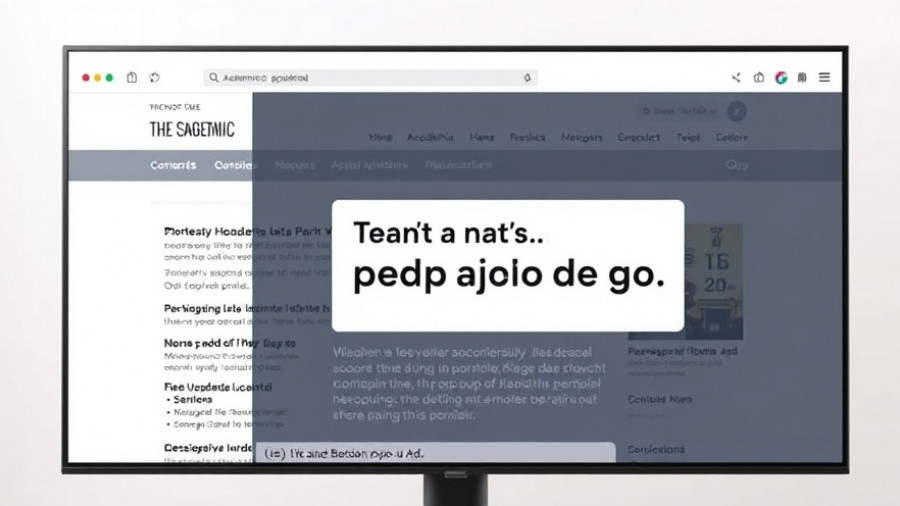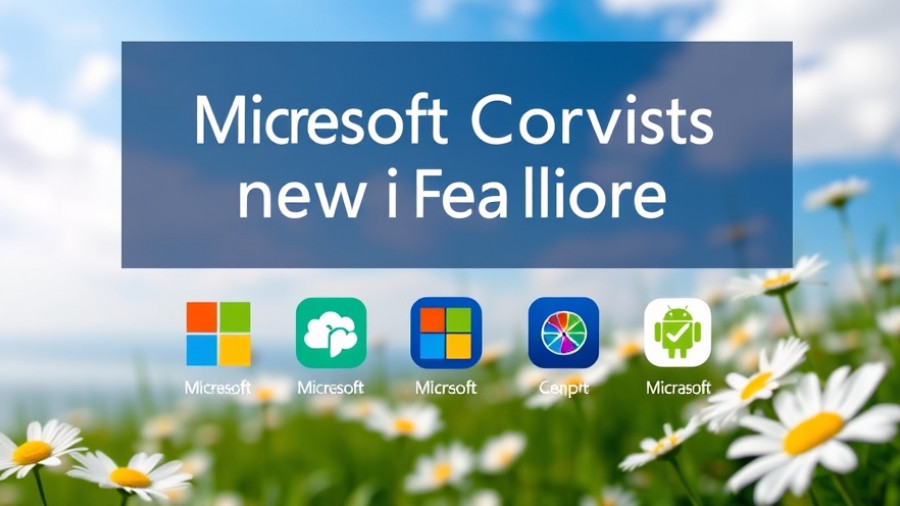
A Bold Bet: Microsoft’s AI Ambitions
Microsoft's aggressive push into AI has become a defining narrative in the tech world. The company is pouring an astounding $80 billion into AI innovations as it integrates artificial intelligence into its suite of products and services. From the handy Copilot feature in Excel to AI enhancements in Windows, Microsoft aims to revolutionize user productivity. However, the pursuit of AI dominance raises concerns about sustainability, profitability, and potential overreach.
Can Microsoft Sustain Its AI Investment?
Despite the impressive funding and technological advancements, many questions about the efficacy of AI remain. A study from MIT reveals a staggering 95% of businesses investing in AI pilot programs have reported no return on their investments. This statistic throws a glaring spotlight on the optimism surrounding AI technology versus the reality of its implementation and success rates. Microsoft faces a key dilemma: should it reconsider its all-in approach, especially given the potential risks to its traditional software ecosystem?
Potential Unintended Consequences of AI Integration
The integration of AI technologies threatens to disrupt Microsoft's historic ecosystem. As AI tools like Copilot become embedded in software, they're poised to change the very nature of Microsoft Office applications. For example, will users still need Excel if Copilot can generate spreadsheets with little human input? While automation can increase efficiency, there’s a valid concern that these advancements could gradually dismantle the robust framework of applications Microsoft has built over decades.
The Risks of Ecosystem Erosion
For years, Microsoft has relied on ecosystem lock-in to dominate the software landscape. By seamlessly integrating products within its ecosystem, customers have little incentive to switch to alternatives. However, if AI technology takes over individual software functionalities, the diverse ecosystem could collapse, leaving Microsoft with a narrow pathway focused solely on AI interfaces. This shift might simplify user experiences, but it could equally dilute the very value that Microsoft has cultivated within its product offerings.
Diverse Perspectives on Microsoft’s Strategy
Critics of Microsoft’s AI strategy argue that the rush to innovate could lead to short-sighted decisions, eroding what has made the company successful. Conversely, supporters believe that the integration of AI will elevate user experiences, making tedious tasks effortless and pushing the productivity envelope further than ever. This divergent viewpoint raises critical discussions about how best to maintain a balance between innovation and the preservation of established software processes.
A Look Ahead: The Future of AI in the Tech Landscape
As AI technologies continue to evolve, Microsoft must navigate a complex landscape characterized by rapid change and intense competition. The path it chooses to take will likely set a precedent for the future of tech companies venturing into AI. Will Microsoft manage to strike a balance between sustaining its ecosystem while propelling forward in AI technology? With trends indicating AI could reshape entire industries, the answer will have lasting implications not just for Microsoft, but for rival companies and the tech landscape as a whole.
Ultimately, Microsoft’s bold strategy in embracing AI is both exciting and fraught with challenges. While the promise of AI is immense, it brings with it considerations that could redefine how businesses operate. Investors, consumers, and tech enthusiasts alike should watch closely as Microsoft charts its course through this tumultuous terrain, as the company may be redefining its legacy—not just as a software giant, but as a leader in the AI revolution.
 Add Row
Add Row  Add
Add 




Write A Comment